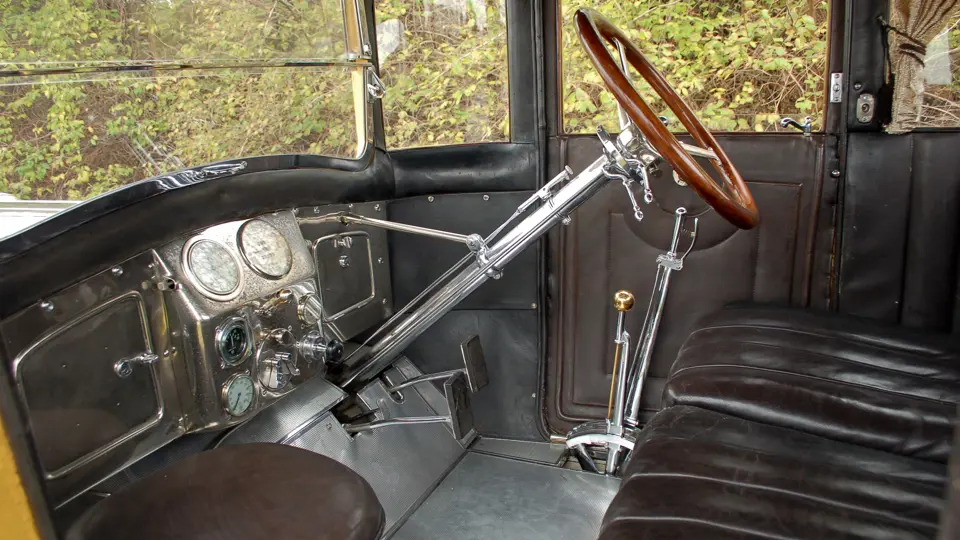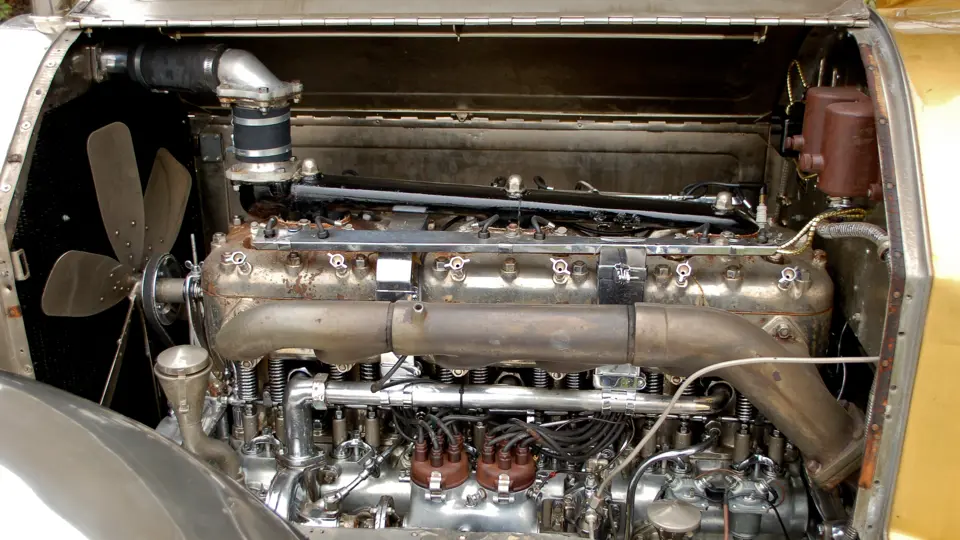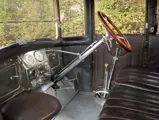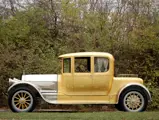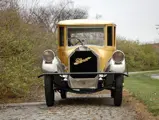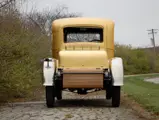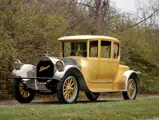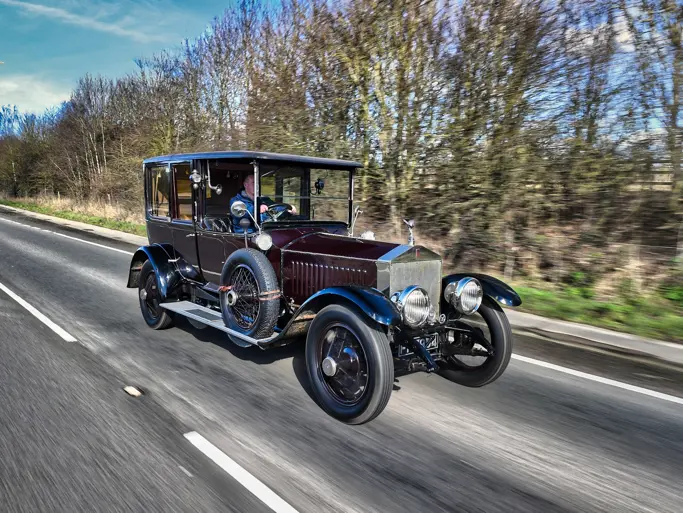Series 51. 48 hp, 525 cu. in. T-head dual-valve six-cylinder engine, three-speed manual gearbox, solid front axle with semi-elliptic leaf springs, live rear axle with three-quarter-elliptic leaf springs, and two-wheel mechanical brakes. Wheelbase: 142"
- Amazing gold-plated aluminum body with nickel and silver trim
- A one-of-a-kind creation on a 48-hp Series 51 chassis
A defining moment in the evolution of the Pierce automobile came in 1904, with the introduction of the four-cylinder Great Arrow. Pierce’s son Percy drove one in the inaugural 1905 Glidden Tour, winning the reliability contest hands down. Pierces took the Glidden trophy for the next four events. “Pierce” and “Arrow” became so linked in the public eye that both car and company were renamed Pierce-Arrow in 1909. By then, Pierce-Arrows, which sold for $3,050 to $7,200, had joined the “Three Ps” of luxury manufacture, the other members of which were Packard and Peerless.
In contrast to Peerless, which introduced a V-8 in 1916, and Packard who brought out the famed “Twin Six” V-12 the same year, Pierce-Arrow held firm to six cylinders, right through to 1927. Pierce’s hallmark for many years was the T-head configuration, produced in several sizes; for most of the teen years these were of 38, 48 and 66 horsepower. In 1918 the 38 and 66 were discontinued and the 48 re-designed with dual valves.
This remarkable Pierce-Arrow 48 was delivered new to Emerson Carey of Hutchinson, Kansas. Mr. Carey was founder and owner of the Carey Salt Company. Salt was discovered in that region in the late 19th century; Carey’s company was the first to open a mine in Hutchinson, producing rock salt. The mine is still in use today.
In 1945, the Pierce was acquired by another wealthy Kansan. He spent nearly 30 years restoring it in an old garage in Great Bend, some 70 miles away. Deciding to do “the unusual and create something really different,” this owner employed skilled workers to create “the Hope Diamond of antique cars,” covering its aluminum body with 23-karat gold. Every inch of the chassis and engine are also plated, either gold or nickel. The bonnet and wings are nickeled, and the hickory-spoke artillery wheels are done in 23-karat gold leaf. All the interior fittings are silver plated. The restoration was completed in 1973. During that time, and until acquisition by its next owner, Kenneth Mausolf, fewer than a dozen people saw the remarkable car. In January 1974, finally, it was given a public debut, displayed in the lobby of the Bank of Engelwood in the Denver, Colorado suburb of that name.
The body has the patina characteristic of gold. The interior is done in black leather, all in excellent condition. The current owner has performed some mechanical work as well as replacing the radiator. Unusual for such a large car, it has seating for only three people, two in the main seat and an additional passenger on a jump seat located forward on the passenger side, which is to say to the left, since the car, like all Pierce-Arrows until 1921, is right-hand drive. Still remarkable nearly four decades after its spectacular restoration, this Pierce-Arrow coupe is truly one of a kind.
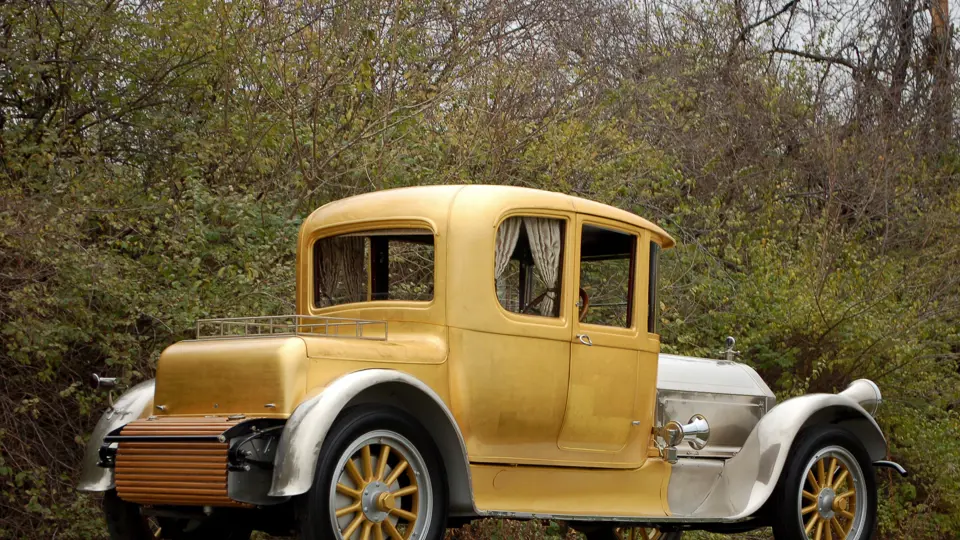



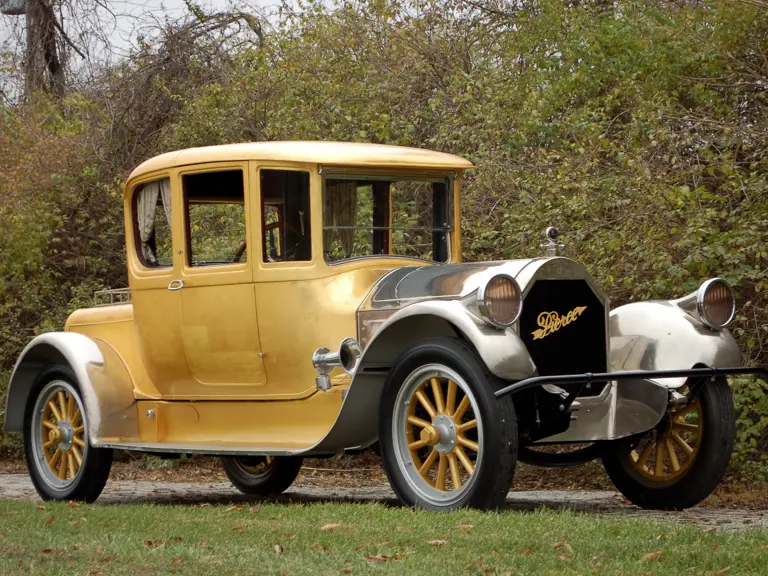
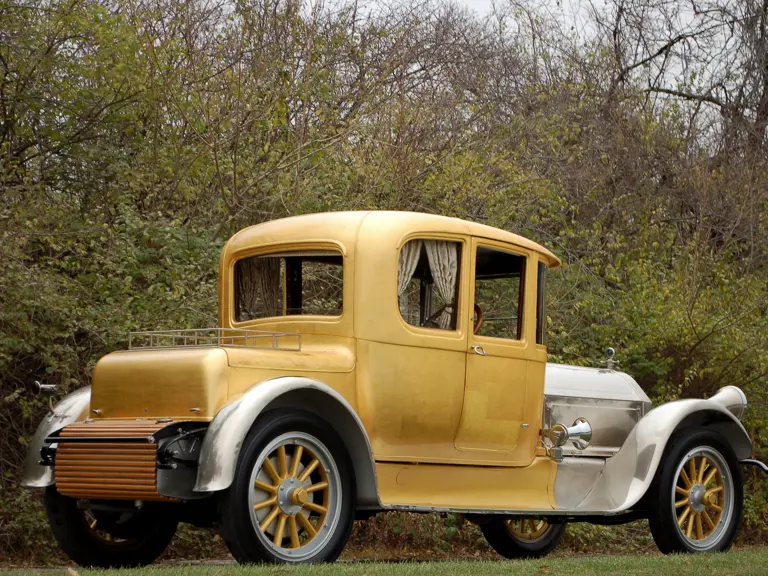
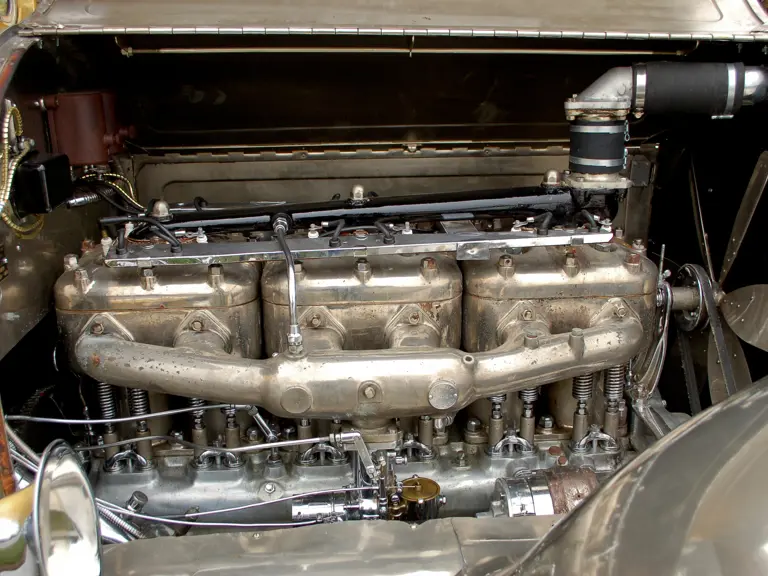

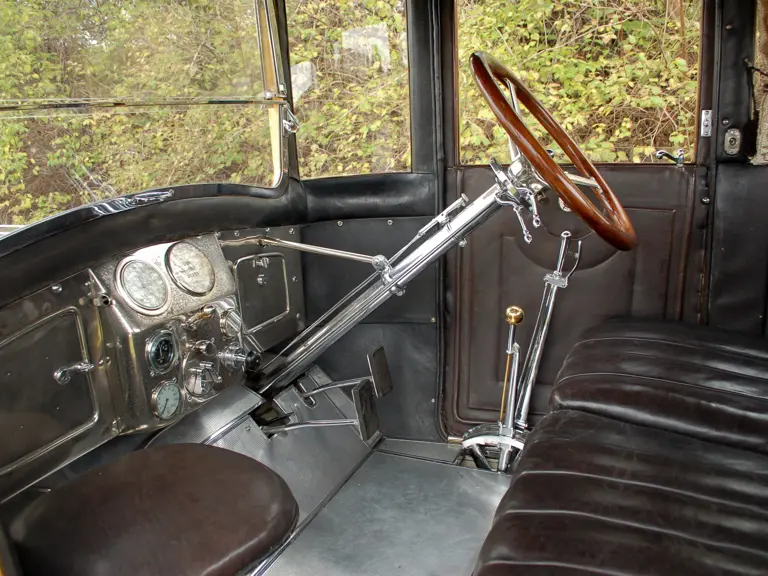
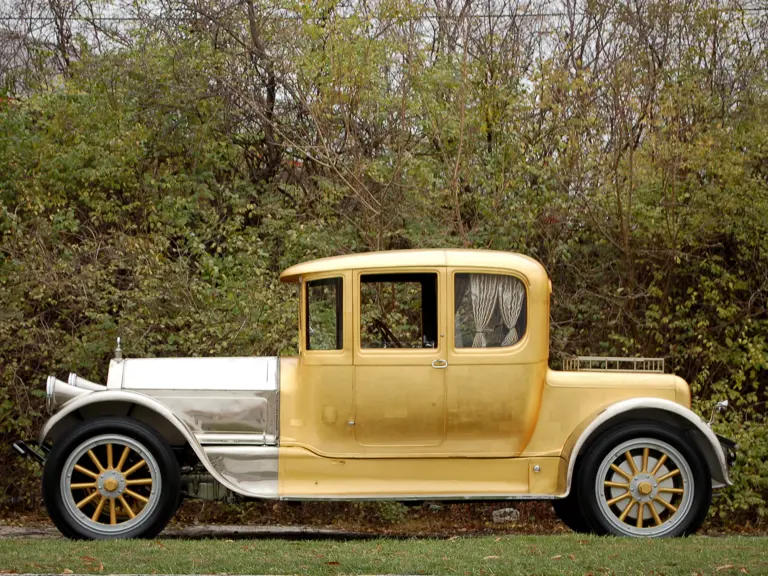
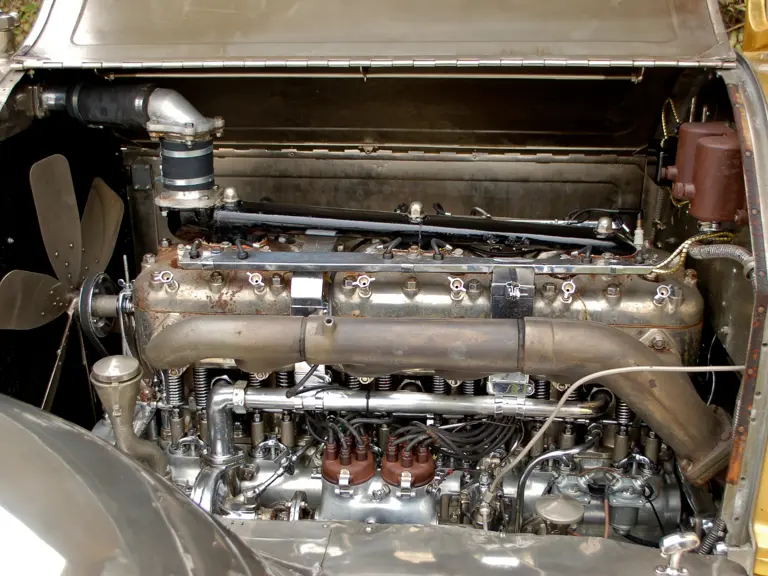
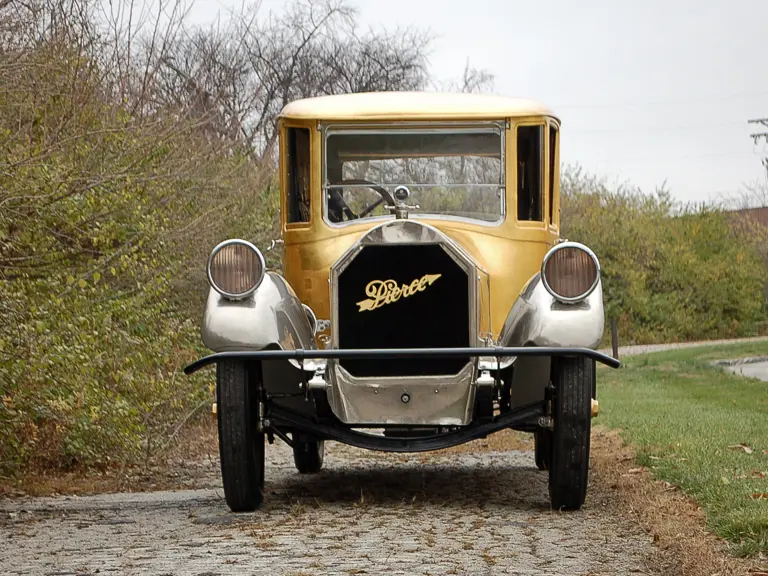
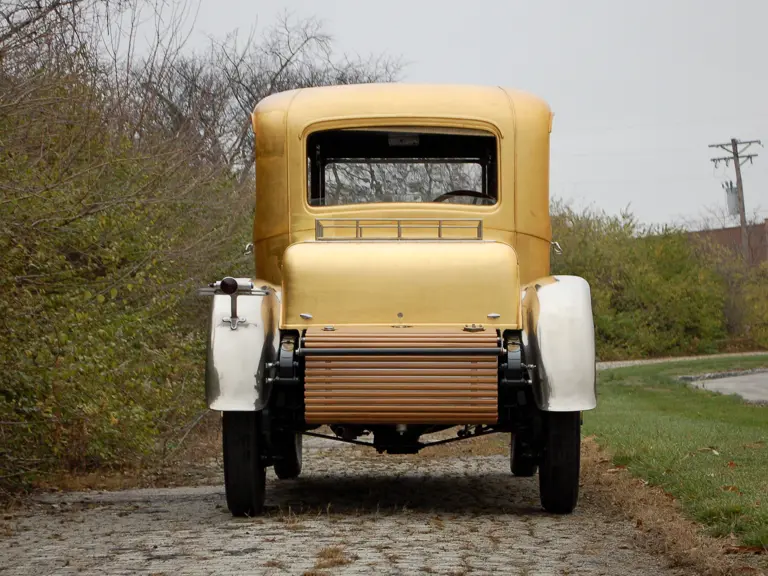

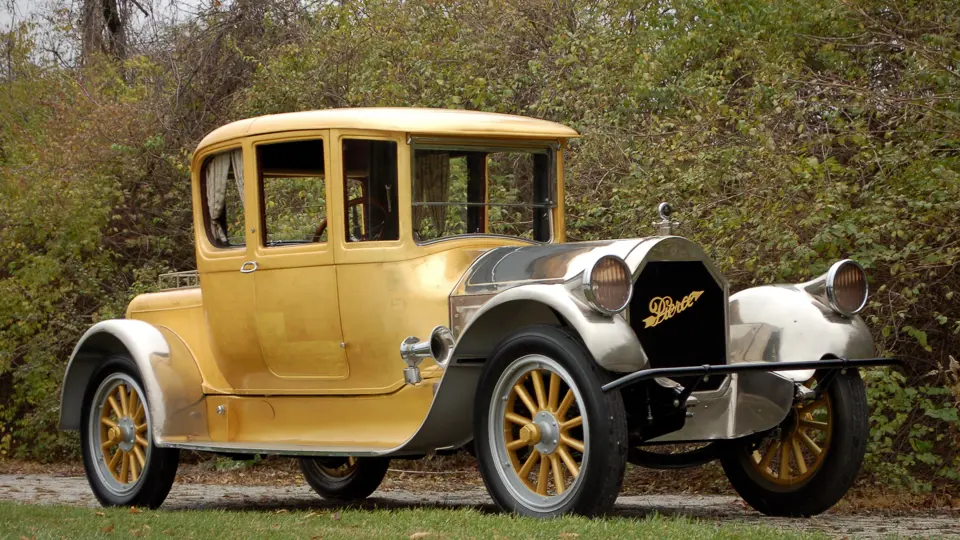
 | Phoenix, Arizona
| Phoenix, Arizona
